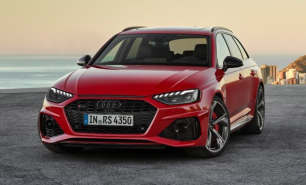As you might have guessed from its impressive engine and performance equipment, the RS6 is a certified weapon on road and track.
On the road you can expect a quiet, refined cabin, superbly balanced steering for low and high speeds and a gentle ride quality courtesy of the pricey air set-up.
It’s as noisy or as quiet as you want it to be, with the cylinder deactivation toning things down at low speeds, and the engine roaring to life under heavy acceleration, or when the 'Dynamic' drive mode is selected.
It can at times be alarming how much the RS6 leaps to life, as it feels so cushy in a city, its width and cabin giving the feel of a luxury car rather than a performance one.
Make no mistake, though, the RS6 is properly quick, and when you give it a kick, it’s the roaring, aggressive machine the spec sheet suggests.
The best place for this? The track, of course. The big V8 and the capability of the all-wheel drive system are truly best explored at velocities impossible to legally achieve on the road.
Once you get past the bark and snarl of this wagon’s eight-cylinders at full force, and the lightning-fast shifts of its eight-speed automatic, you’ll have a moment to appreciate the way it simply holds to the tarmac when you tilt it into the corners, providing a balance when loaded up which only air suspension can provide.
The steering is awesome, communicating the texture of the road nicely to the driver, and requiring just the right amount of force to keep the car pointing where it needs to go.
The grip level is astounding with the huge tyres and the four-wheel steer system lets this hefty wagon take corners at a tighter angle than your brain initially allows.
Thankfully, the four-wheel steer system isn’t weird, either. While it can have a strange effect on some cars, in the RS6 it only bends your mind slightly when you tip it into a hairpin. Otherwise it feels pretty normal.
When everything is warmed up, it can let its guard down slightly and allows the driver to eke out a slide at the rear here and there for extra fun-factor
Jeez. What a machine. I guess this is what a quarter of a million dollars buys. A car that can do it all. Take the kids to the school in comfort and tear it up on the track like few other passenger cars on the same day.
There’s a caveat, though. A small one which looks like it will turn into a big one for cars like this in the near future.
I had the opportunity to drive the RS e-tron GT around the same circuit and it was better. Much better.
It was faster, more accurate, more composed. It was so effortless, I didn’t realise exactly how much quicker than the RS6 it was until I drove them back-to-back.
It’s a good sign for the future, but also a reminder a V8 like this isn’t the performance pinnacle it once was.










